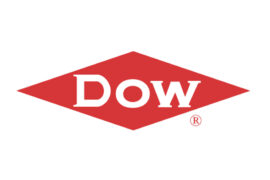This article is featured in the 2024 FCLTGlobal Blue Book, a collection of real-world examples of how our members are putting long-term strategies into practice today. We hope that these practical illustrations will inspire others to embrace the mission of focusing capital on the long term. Learn more >>
At Dow, our ambition is to become the most innovative, customer-centric, inclusive, and sustainable materials science company in the world. To achieve this vision requires a combination of near-term adaptability and long-term strategic decision making. Since its separation from DowDuPont in 2019, Dow has made significant progress in advancing its ambition, supported by a long-term mindset that is reflected in everything we do. This approach has ensured Dow’s business remains resilient across the economic cycle, delivering top-quartile cash flow, cost performance, net debt reduction and shareholder remuneration, all while advancing our Decarbonize and Grow as well as Transform the Waste strategies.
A differentiated portfolio well-positioned to meet customer needs
In an industry positioned to solve many of the world’s toughest challenges, there are several growth drivers that are increasing demand for our products, including connectivity, efficiency, and sustainability. Dow’s global scale, leadership in materials science, and alignment to attractive market verticals enable us to capture growth across these trends while also remaining resilient.
Plan to achieve a net-zero emissions future while growing earnings
Sustainability is a significant growth opportunity for Dow. In 2021, we announced a disciplined plan to continue delivering value growth while achieving a net-zero emissions future. We expect to increase underlying EBITDA by more than $2 billion through the execution of higher-return, lower-risk, faster-payback projects by mid-decade and another $1 billion from our Fort Saskatchewan, Alberta Path2Zero project by 2030. Our Decarbonize and Grow strategy includes implementing a phased, site-by-site approach to replace end-of-life assets with lower-emissions, lower-CapEx intensity, larger-capacity operations, all while targeting return on invested capital at or above 13 percent over the economic cycle. We have a clear path to a 30 percent reduction in Scope 1 and 2 emissions by 2030 over the 2005 baseline and achieving net-zero by 2050.
Developing the world’s first net-zero Scope 1 and 2 emissions ethylene cracker and derivatives complex that will decarbonize 20% of Dow’s worldwide ethylene capacity
Notably, we are developing the world’s first net-zero Scope 1 and 2 emissions ethylene cracker and derivatives complex in Fort Saskatchewan, Alberta. The project will decarbonize ~20 percent of our global ethylene capacity while more than tripling the ethylene and downstream derivative capacity at the site as it delivers ~$1 billion in EBITDA growth by 2030. This key investment allows us to meet the increasing needs of our customers and brand owners seeking to lower the carbon footprint of their products. Our disciplined approach positions us well to lead the industry in decarbonizing, growing, and accelerating our path toward carbon neutrality.
Accelerating the development of a circular economy through a capital-efficient approach
Innovating circular and sustainable solutions also remains a key aspect of our strategy. In October 2022, we accelerated our sustainability targets originally set in 2020 with a new commitment to commercialize 3 million metric tons of circular and renewable solutions annually by 2030, which is expected to result in more than $500 million in incremental EBITDA by 2030. To reach our target, we have a robust pipeline of strategic partnerships with leaders across the value chain to enable and scale waste transformation through mechanical recycling, advanced recycling, and bio-based solutions. This allows us to enable a more circular economy by serving as a major off-taker of circular feedstocks, with a capital-light approach for Dow. For example, we are partnering with Mura Technology to construct multiple world-scale advanced recycling feedstock facilities in the U.S. and Europe, as well as with Valoregen to build the largest single hybrid recycling site in France. When you combine this circularity target with the additional capacity from our Alberta project, we expect our circular, renewable, and scope 1 and 2 zero-CO2 emissions capacity will comprise over 50 percent of our global polyethylene capacity by 2030.
Commitment to delivering long-term value for all stakeholders
We are committed to protecting the planet as we decarbonize our footprint and leverage our climate adaptation approach to stewarding water, bio-diversity and nature in our operations. We are advancing circular, renewable, and low-carbon products and technologies in collaboration with our partners. We continue cultivating an inclusive team and thriving communities as a responsible and invested employer and neighbor. All this is supported by driving strong governance practices and performance. Consistent with our longstanding commitment to transparency and accountability, we’ve set clear goals against which to measure our progress as outlined in our annual INtersections Progress Report. Notably, we’ve maintained our clear link to pay-for-performance by adding a quantifiable greenhouse gas emissions reduction metric to our long-term incentive compensation program.
By working at the intersections of science and sustainability, culture and accountability, Dow is partnering with others to encourage new thinking, advance issues that matter most to our stakeholders, and unlock new avenues of growth that will power our success for the future.


